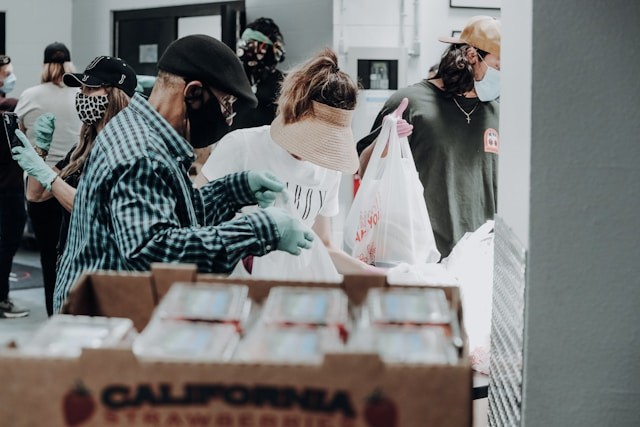
Workers are increasingly discovering that comprehensive workplace volunteer programs fulfill their desires for face-to-face interactions, professional development, and socially conscious employers, which may be lacking in traditional corporate environments. The heightened interest, stemming from reflections during pandemic-related shutdowns, has resulted in a notable increase in corporate partners, volunteer hours, and active participants in 2023 compared to previous years, as reported by Benevity. This platform assists companies in coordinating such programs.
According to a survey conducted by the Association of Corporate Citizenship Professionals from 149 companies, more than 60% of respondents reported a rise in employee participation in volunteer activities last year.
Workplace Volunteer Programs Driving Participation and Retention
Jessica Rodell, a management professor at the University of Georgia specializing in worker psychology, notes that even employees who do not personally volunteer feel more positive about working for organizations with public-spirited solid cultures and take pride in being associated with socially conscious companies regardless of their volunteer involvement. Rodell also highlights that companies with comprehensive volunteer programs typically experience lower turnover rates.
Rodell suggests that volunteering can be a valuable tool for companies to boost employee engagement and retention, especially among frontline workers who find meaning in their jobs but may feel disconnected from their company's mission. However, business management experts emphasize that employees should be free to choose their volunteer activities, nonprofit partners, and time commitments to foster genuine connections.
Different Volunteering Opportunities
Experts emphasize that not all volunteer activities are equal. Service days are not simply scheduled events for team-building exercises or photo opportunities. Instead, some companies allocate regular work hours over several months for employees to engage in meaningful projects, such as building websites or devising business strategies for local charities.
Executives may believe that casual, social activities such as filling backpacks during happy hour are essential to engaging their fun-loving employees. However, according to management professor Rodell, more substantial and time-intensive programs tend to profoundly impact volunteers.
Best practices involve aligning with employees' interests and meeting them at their current level of engagement. At Blue Cross Blue Shield, skill-based volunteer opportunities vary from short-term flash projects to longer-term partnerships lasting several months. The company allocates 15 days each year for associates to volunteer, similar to vacation and sick time. Additionally, affinity groups have the opportunity to collaborate on service projects.
Incorporating Giving in Volunteering Programs
Another strategy to engage busy, experienced employees with limited volunteer time is to incorporate giving into volunteer programs. For example, Liberty Mutual matches employee donations to over 11,000 eligible charities. Additionally, volunteers at the insurance company are motivated by the opportunity to earn mini-grants for their chosen charity, totals reaching $2,500 for those who complete 100 service hours.
Recently, some employees dedicated over six months to consulting with More Than Words, a Boston-based nonprofit that offers employment opportunities for youth aged 16 to 24 who have experienced foster care, legal systems, homelessness, or other challenges. According to Naomi Parker, the nonprofit's Chief Advancement Officer, Liberty Mutual employees discovered a need for front-end support after surveying participants, which included assistance with transportation and food to enable youth to secure employment.
The volunteer engagements have evolved into significant connections, resulting in a Liberty Mutual employee joining the More Than Words board and over three million four hundred thousand dollars pledged to the nonprofit since 2013. Employees have contributed over $85,000, including matching donations and other incentives.
Volunteering serves as a pathway to establishing relationships beyond the typically expensive, behind-the-scenes assistance employees provide. These long-term partnerships, in turn, introduce budget-constrained nonprofits to new donor networks. With Gen Z projected to surpass Baby Boomers in the workforce this year, Matt Nash, Executive Director of Blackbaud Giving Fund, suggests that now is an opportune time to cultivate these connections. According to a Fidelity Charitable report, over three-fifths of charitable donors recently volunteered with the organizations they supported. As much as young employees increase their earnings, well-established relationships can prove especially beneficial for nonprofits.



